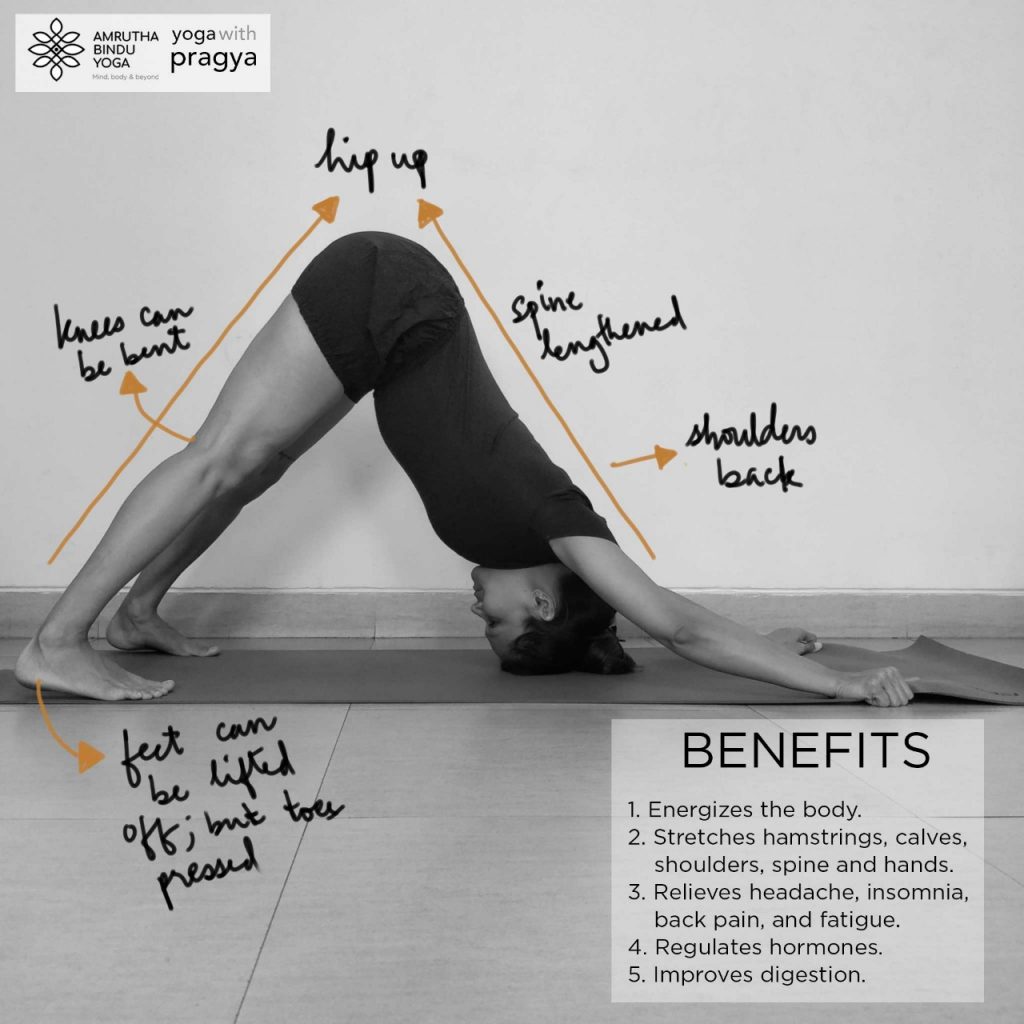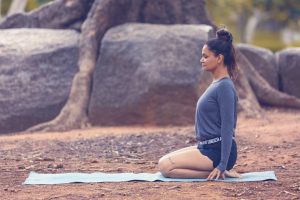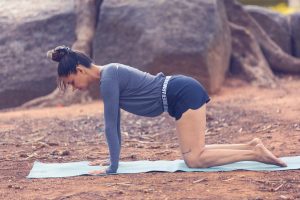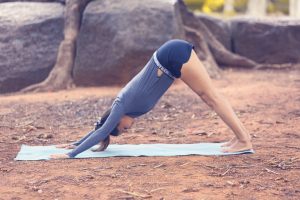This pose resembles a dog stretching itself with head and forelegs down and the hind legs up, hence the name. (Light on Yoga, p 110)
Adho means “down,” mukha, meaning “face,” svana, meaning “dog,” and asana, meaning “pose”.
It helps to:
- Relieve pain and stiffness in the legs and heels, so great for runners and sprinters.
- Strengthen and shape the legs.
- Open up the shoulder blades and shoulder joints.
- Strengthen the arms and legs.
- Relieve fatigue.
Contraindications
Avoid practicing this asana when you have a fever or are feeling lightheaded. Also if you have diarrhea, avoid this asana.
Busting the Myths
Most yoga students feel touching your head to the floor is the ultimate goal in this asana (a la BKS Iyengar). Guess what? Forcing your head to the floor makes you curve your spine, which is definitely not what you want to be doing. Read on for some practice pointers…
Practice Pointers
- Resting your heels against a wall and pushing into the wall will enable you to engage and extend the back of the legs.
- If you are menstruating, have high blood pressure or a headache, rest your head on a bolster or block.
Incidentally, I wrote about the adho mukha svanasana a few weeks ago. Check out the blog, it may shed more light.
Stay tuned for more from our Yoga to Boost Immunity Sequence.
[ddownload id=”8170″] the Daily Yoga Practice Checklist.
Follow Amrutha Bindu Yoga here.
Follow Medha Bhaskar here.
Follow me (Pragya Bhatt) here.





